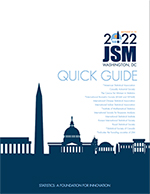Back
2022 Joint Statistical Meetings
Section on Medical Devices and Diagnostics
Session: Contributed Poster Presentations: Section on Medical Devices and Diagnostics
Measurement Recalibration the Right and Fair Way
Tuesday, August 9, 2022
Activity Number: 292
-
Bertrand Haas
Amazon
When measuring a physical or physiological quantity, one usually needs to tackle a certain amount of noise. It is important to distinguish between systematic and random noise since the way to mitigate them is different. Systematic noise (or bias) is usually corrected using regression against some ground truth. However, this is often done the wrong way, and despite minimizing total errors (systematic and random), it leaves some residual bias. We give an example based on SpO2 measurements. This bias might be small close to the population mean, but usually grows larger further away, which yield to unfair outcomes at the more extreme parts of the distribution. This is a problem when measuring human biological quantities to assess if and how much a subject is unhealthy. We argue here that re-calibration should be bound to eliminate systematic noise, that random noise should be mitigated by other means (like improved device engineering), and that devices' Key Performance Indicators based on total error should be revised. We also apply this insight for the more complex problem of calibration when the algorithm processing the sensors input relies on a deep neural network.

